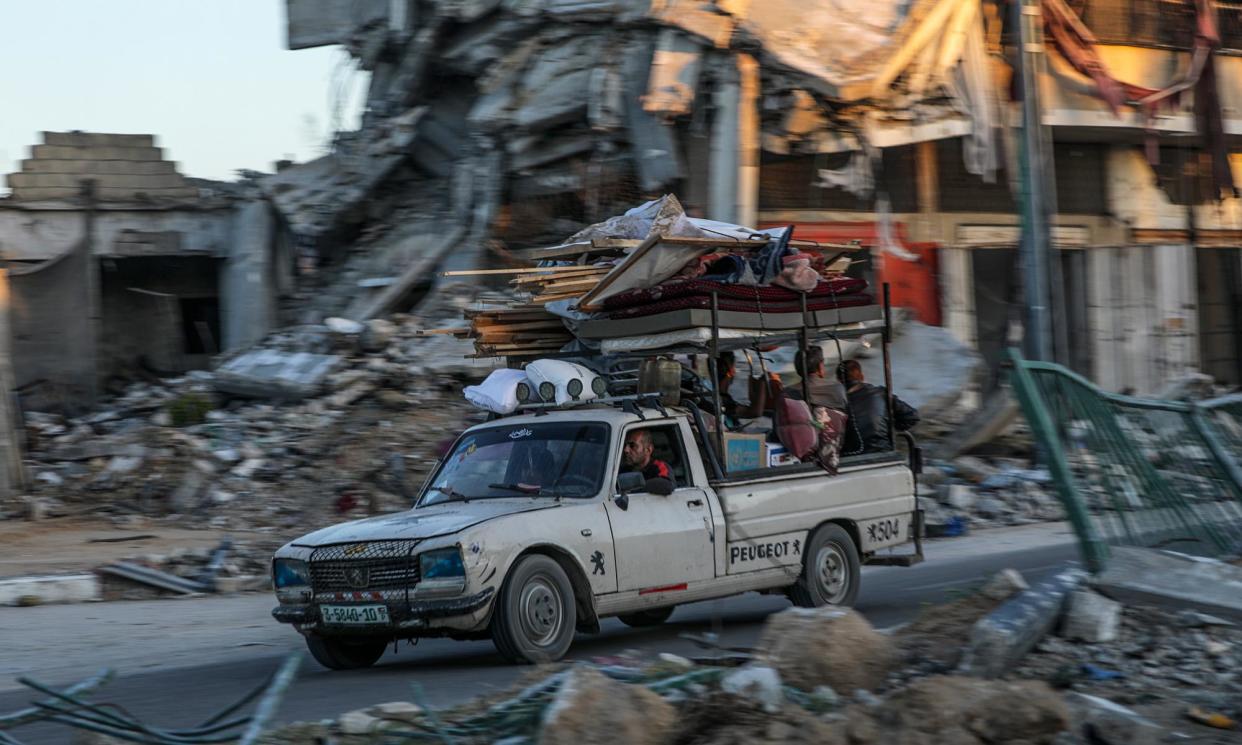Why has Israel moved into Rafah and what is status of its ceasefire talks with Hamas?

On Monday, thousands left eastern neighbourhoods of Rafah in southern Gaza after the Israeli Defense Forces (IDF) told people to move to a “humanitarian zone” north-west of the city to avoid being harmed in an imminent attack. Then Hamas, after a week of stalling, accepted terms for a ceasefire put forward by mediators. Hours later, Israel said it would participate in a new round of ceasefire talks but that the conditions of a deal were still far from decided. Finally, after airstrikes overnight, the IDF sent a column of tanks and other armoured vehicles to seize the Palestinian side of the Rafah border crossing with Egypt on Tuesday.
Why has Israel moved into Rafah?
Israel has said the Palestinian side of the Rafah border was being used for terrorist activities.
Any border control is an important strategic objective and the seizure of this one allows Israel to control the key entry and exit point with Egypt. Israeli military officials have not put a timeline on their operation in Rafah but may not want to relinquish the site soon. A presence there brings Israel closer to cutting off any Hamas leaders in Rafah and allows control of aid convoys as well as other traffic.
The US has made clear its opposition to any broader assault into the city, but this operation signals continued determination from the Israel government to keep fighting Hamas, thus increasing its leverage during ceasefire negotiations.
The release – or apparently authorised leak – of clips of soldiers raising Israeli flags and using a tank to destroy a concrete “I love Gaza” sign at the crossing suggests a symbolic purpose too. This may be to frame the operation as the final – and so far elusive – victory ahead of concessions in negotiations.
What does closing the Rafah crossing mean for Palestinians?
The crossing has been a lifeline to the outside world for Palestinians in Gaza, allowing the delivery of aid and the evacuation of patients from a collapsed healthcare system. Closing it is a “death sentence” against the people of Gaza, particularly the ill and injured, the Palestinian-run Gaza Crossings Authority says. The only other crossing point in the south – Kerem Shalom – through which most aid to Gaza has been delivered recently, has also been closed after a Hamas rocket attack.
What’s in the deal that Hamas has accepted?
This is unclear, though broad outlines are known and Al Jazeera has published what the Qatari network says is a draft. At its heart is an exchange of hostages seized by Hamas during its attack into Israel on 7 October for Palestinian prisoners held in Israeli jails and the withdrawal of Israeli forces from Gaza. Complex formulae determine how many of which category of prisoner and hostage – old, young, male, female, ill or healthy, military or civilian, convicted or not – will be released and when. There would, probably, be an initial 42-day ceasefire, followed by two extensions of a similar length of time if both sides stick to the deal. Israeli troops would pull back from Gaza, although the timescale and extent of this is one point of contention. Israeli restrictions on aid would be lifted and the supply of basic utilities, cut off by Israel in the early days of the conflict, restored.
The deal, which was drafted primarily by Egyptian and Qatari officials, would bind both parties to work towards a “sustainable calm” – wording that could suggest either the permanent end to hostilities demanded by Hamas or the temporary pause that Israel wants.
Why hasn’t Israel accepted it?
Benjamin Netanyahu has repeatedly vowed to “crush Hamas”. Signing a ceasefire deal and making painful concessions shows clearly that the military offensive has not achieved this aim and will leave the Israeli prime minister very exposed.
Far-right coalition partners are fiercely opposed to a deal and are likely to resign, threatening the collapse of Netanyahu’s government, hastening elections and exposing him to a lengthy prison term if found guilty in corruption trials.
Many rightwing Israelis hope the war will offer an opportunity to re-occupy Gaza and re-establish settlements there. Some extremists, including members of the government, have called for the “voluntary migration” of Palestinians from Gaza.
More broadly, Israelis remains traumatised by the 7 October attacks and fearful of a repeat. A deal leaving Hamas in charge of part of Gaza and its leaders unscathed is difficult for many to swallow – despite their deep desire to see the release of all hostages.
There is also a deep lack of trust – in mediators, the US, and the international community more generally. Outrage overseas at the high toll of civilian casualties, massive destruction or acute humanitarian crisis in Gaza is often dismissed as manufactured, unjustified or in bad faith.
What’s next in the talks?
Israel has said it will send a delegation to Cairo in the coming days to discuss with mediators the proposal that Hamas leaders have said they have accepted. The optimistic view is that this at least provides a framework for serious discussion that could lead to a deal reasonably quickly. The pessimistic view is that fundamental disagreements that have prevented agreement since a short-lived truce in November are still to be resolved and that any permanent end to hostilities is still some way off. On Monday night, Israel’s war cabinet decided to press ahead with its military offensive targeting Rafah.


